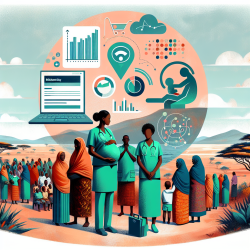Introduction
Unsafe abortion remains a critical public health issue in Kenya, contributing significantly to maternal morbidity and mortality. The study titled "Unsafe abortion in Kenya: a cross-sectional study of abortion complication severity and associated factors" provides valuable insights into the severity of abortion complications and associated factors. As practitioners dedicated to improving health outcomes, understanding these findings is crucial for implementing effective interventions.
Key Findings
The study reveals that over three-quarters of women seeking post-abortion care (PAC) in Kenya experience moderate to severe complications. Factors such as delays in seeking care, interference with pregnancy, and unwanted pregnancies significantly influence the severity of complications. The odds of severe complications increase with mistimed or unwanted pregnancies and induced abortions.
Implications for Practitioners
For practitioners, these findings underscore the importance of timely intervention and comprehensive care strategies. Here are some actionable steps based on the study's outcomes:
- Promote Timely Access to Care: Encourage early medical consultation for abortion-related complications to reduce severity. Public education campaigns can raise awareness about the risks of delayed care.
- Enhance Family Planning Services: Address the unmet need for family planning to prevent unwanted pregnancies, thereby reducing the incidence of unsafe abortions.
- Implement Comprehensive Post-Abortion Care: Ensure that all health facilities provide quality PAC, including counseling and access to family planning methods.
- Strengthen Health Systems: Equip lower-level health facilities with the necessary resources and training to manage abortion complications effectively.
Encouraging Further Research
While this study provides significant insights, further research is needed to explore the sociocultural factors influencing abortion decisions and the effectiveness of interventions. Practitioners are encouraged to engage in collaborative research efforts to develop targeted strategies for reducing abortion-related morbidity and mortality.
Conclusion
Addressing the factors contributing to unsafe abortion complications in Kenya requires a multifaceted approach. By implementing data-driven interventions and fostering a culture of continuous research, practitioners can significantly improve maternal health outcomes.
To read the original research paper, please follow this link: Unsafe abortion in Kenya: a cross-sectional study of abortion complication severity and associated factors.










